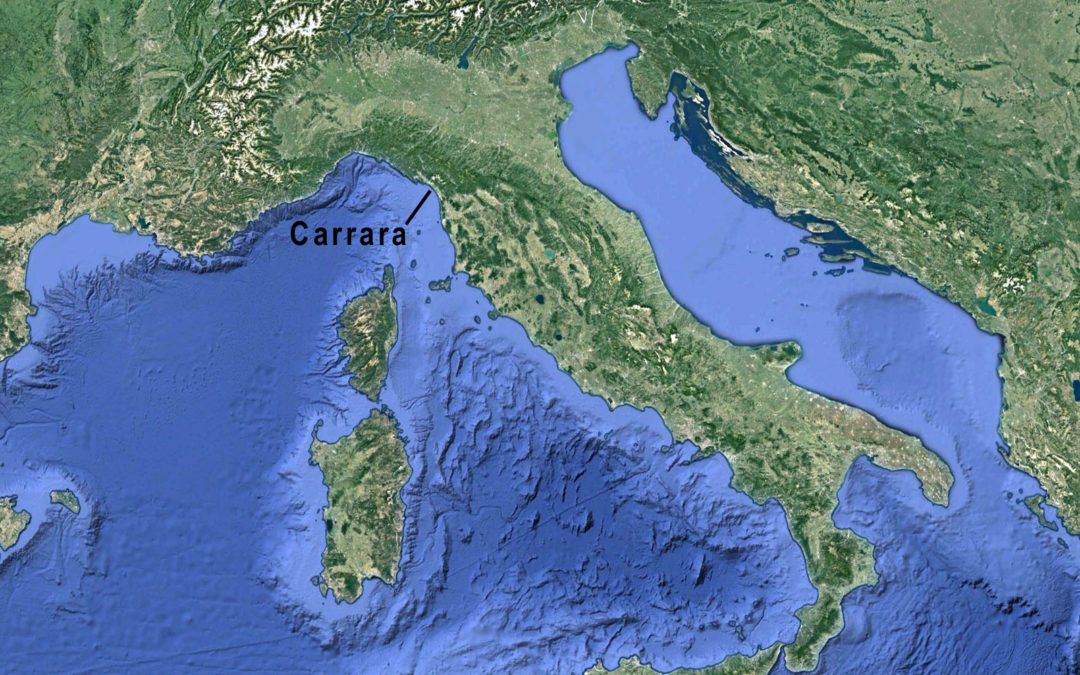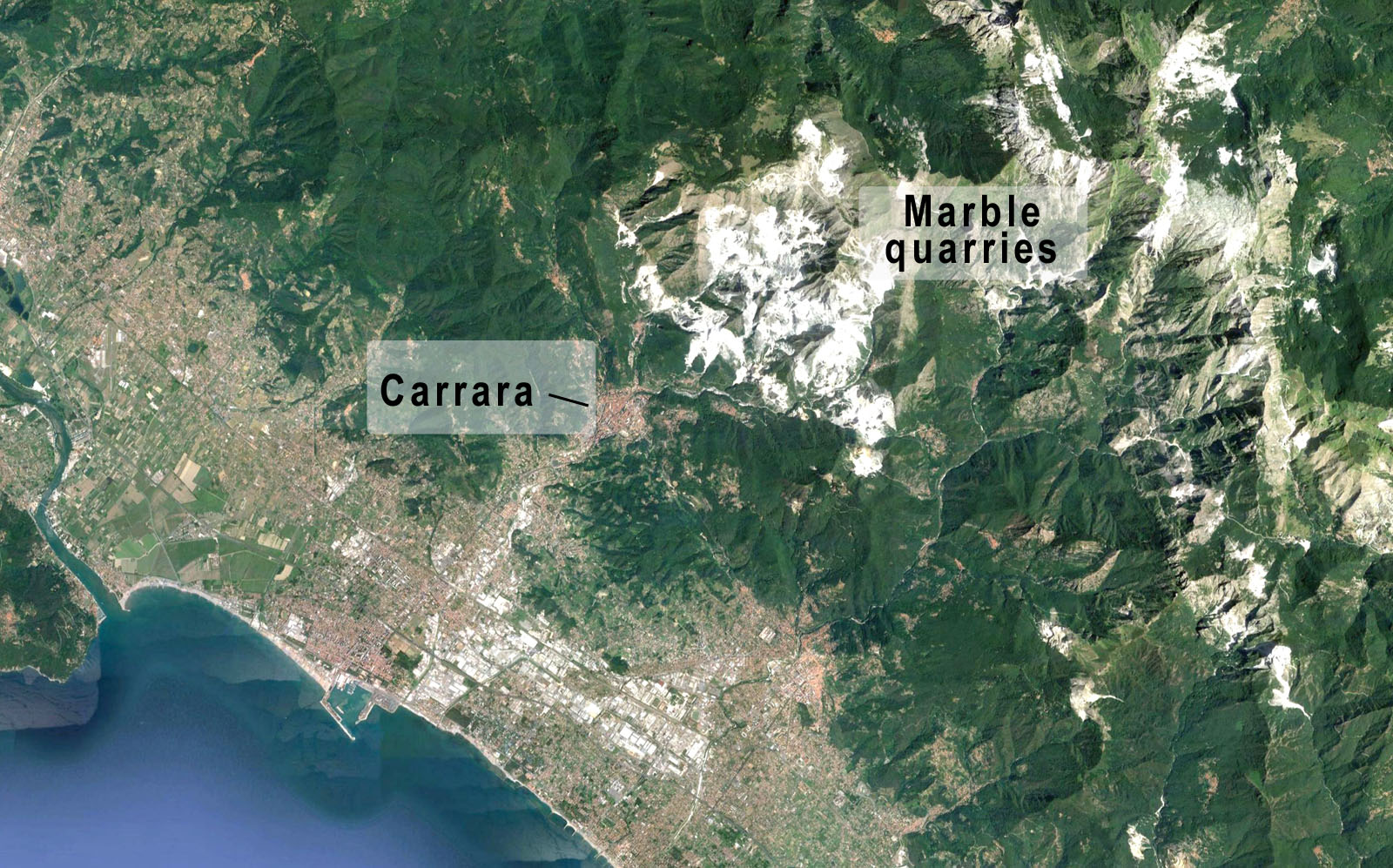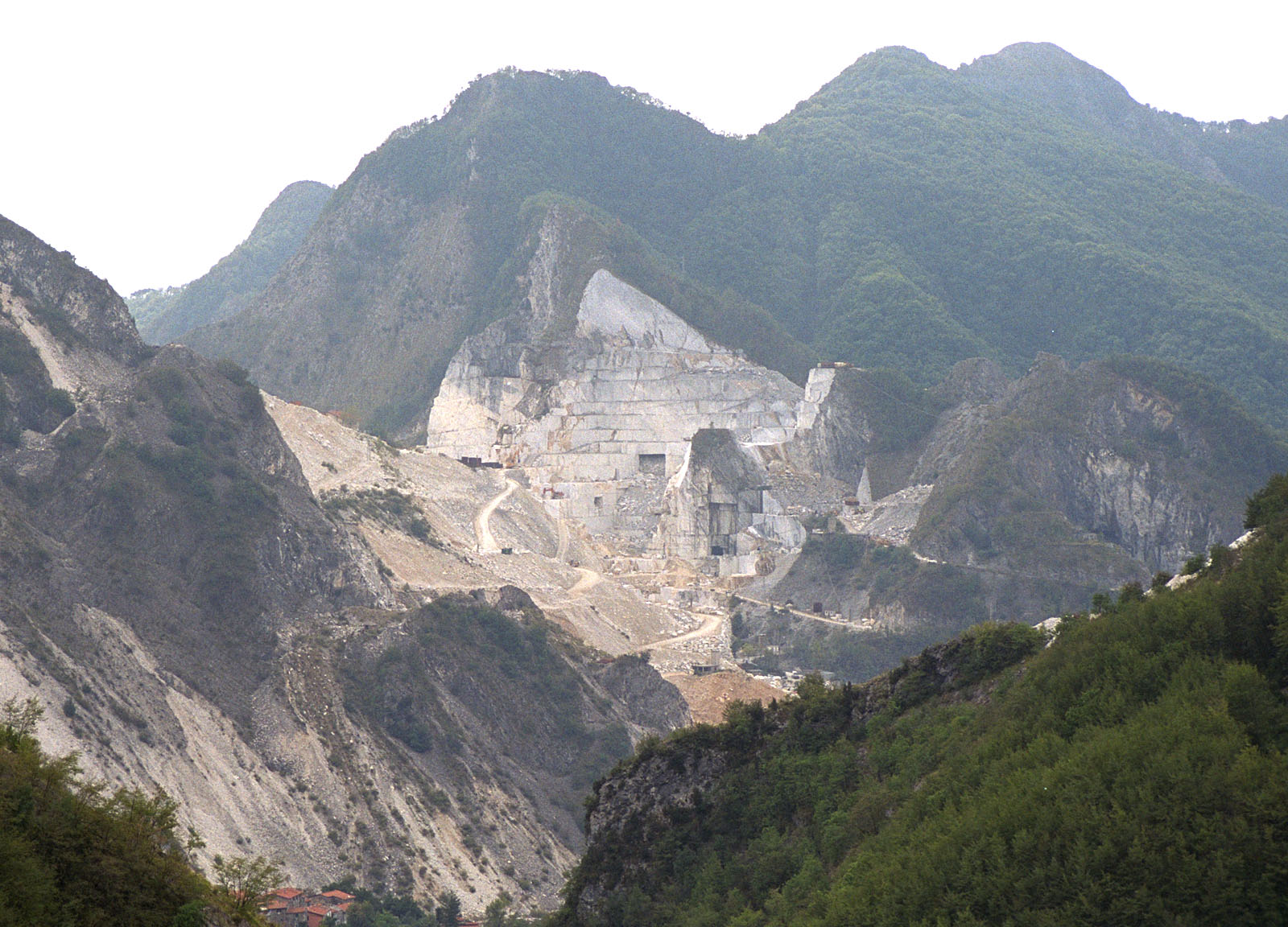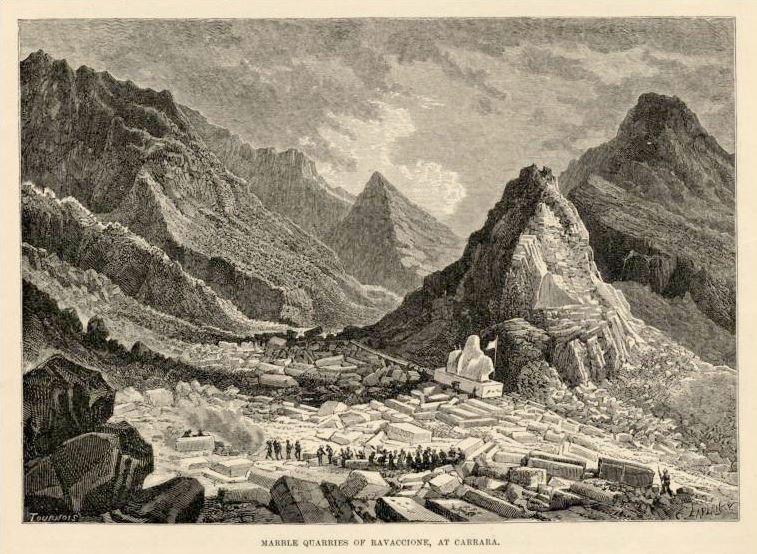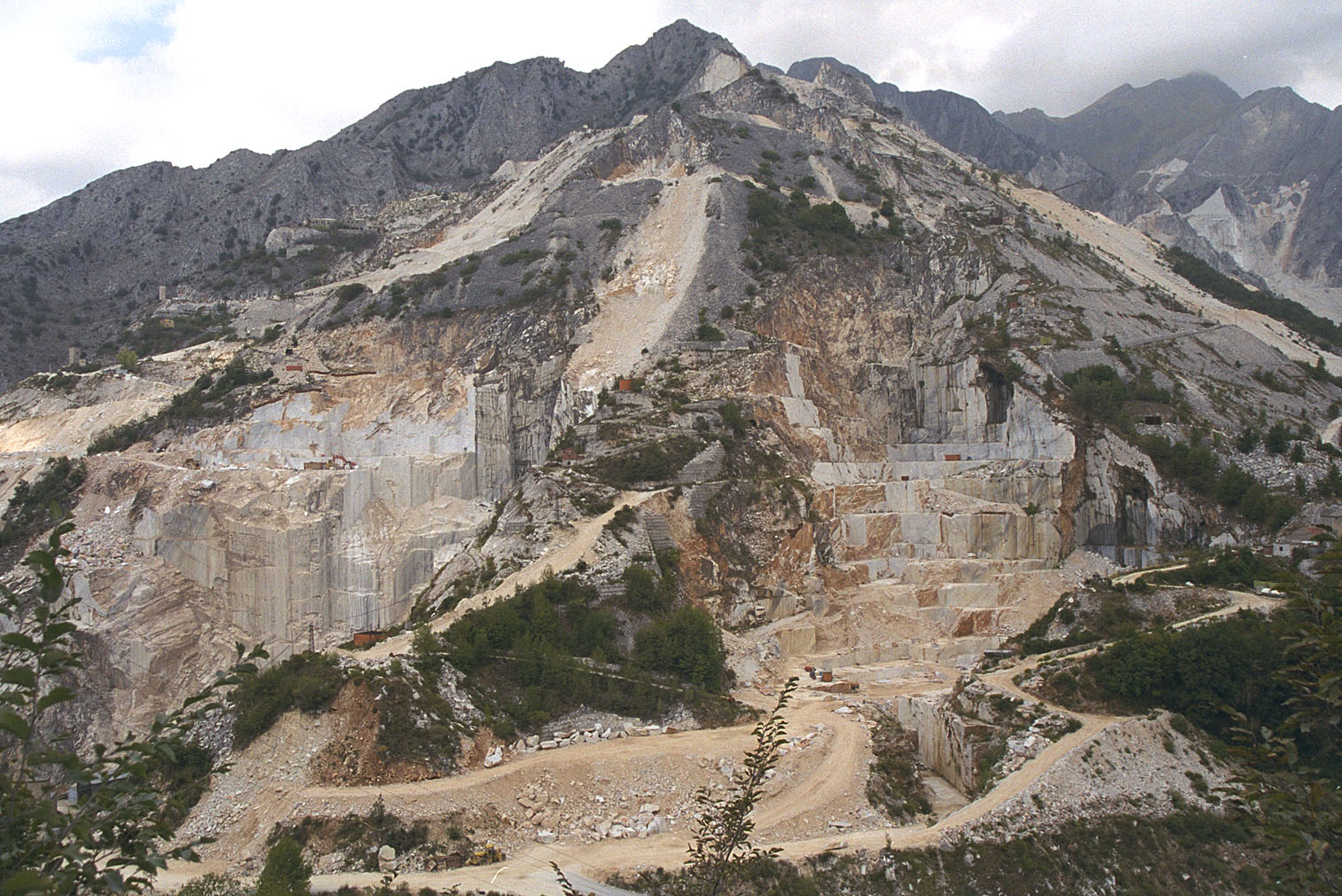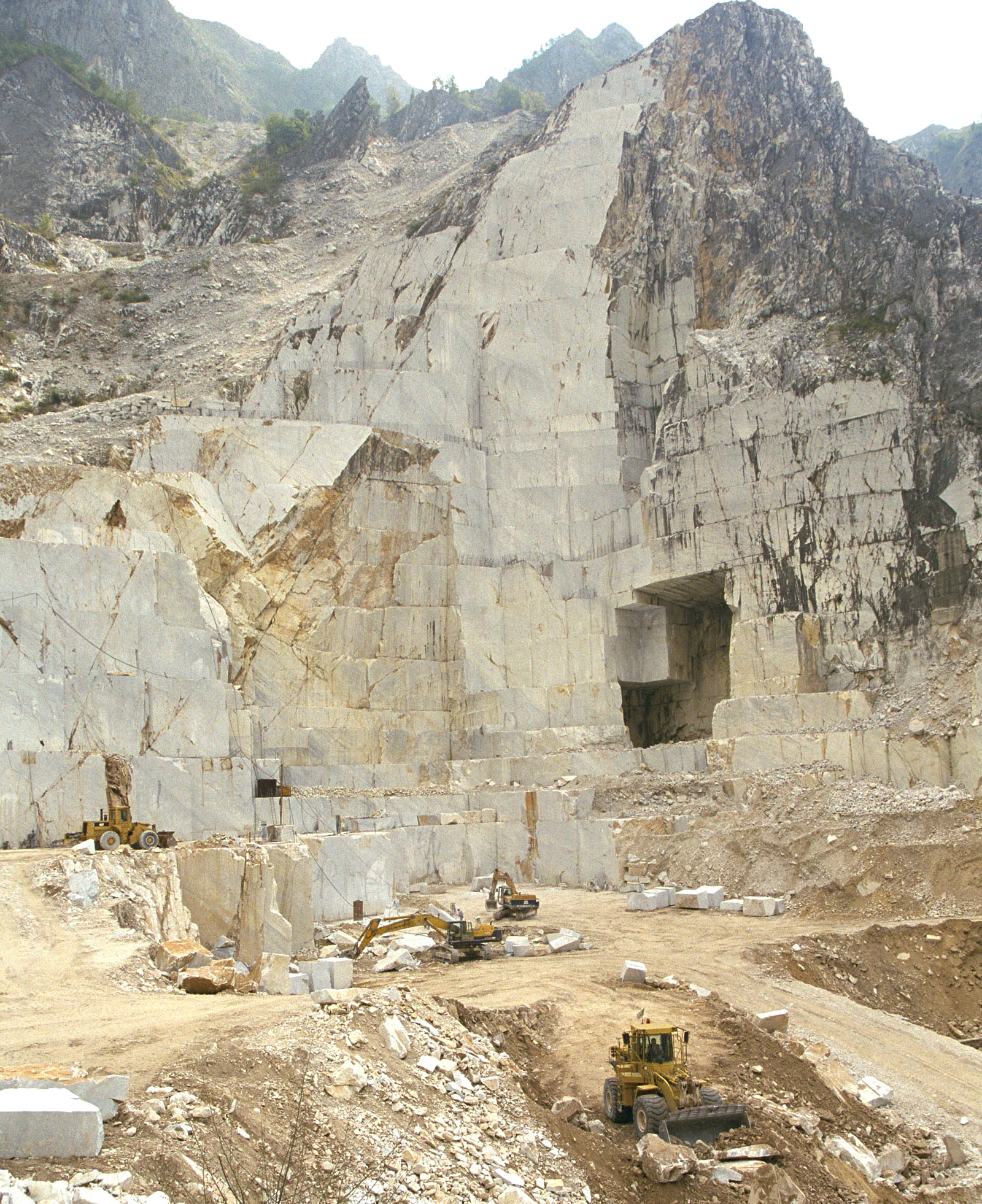Few places in the world are as rich in stone history as Carrara in northern Tuscany, Italy. Located where the Apuan Alps meet the Ligurian Sea, Carrara combines enormous marble deposits with nearby access to shipping on the Mediterranean. This has made Carrara both a major center for marble quarrying and carving as well as a fabrication center for many other stones from throughout the world.
Marble
Marble is limestone that has been heated, compressed and recrystallized into a denser form. In Carrara, Jurassic-age limestones were compressed and deeply buried during collisions of the African and European plates. The resultant marbles were later exposed by uplift and erosion of the northern Apuan Alps outside Carrara.
Renaissaince
Marble production declined after the fall of Rome but picked up again during the Renaissaince. In the 15th century, Michaelangelo hand-selected blocks of the purest statuario marble at Carrara and had them carted to the coast and then barged up the Arno River to Florence where he carved his David.
Quarrymen
Quarrymen (cavatori) and stone carvers (scarpellini) in Carrara have a long history of supporting radical labor organizations. Violent revolutionists, expelled from other European countries in the late 1800’s, migrated to Carrara and founded anarchist groups. Carrara is the birthplace of the International Federation of Anarchists.
There was no anarchy during my visit, but it is still fun driving the roads around the marble quarries. You can drive closer to the quarries than I am use to at many places in the US.

